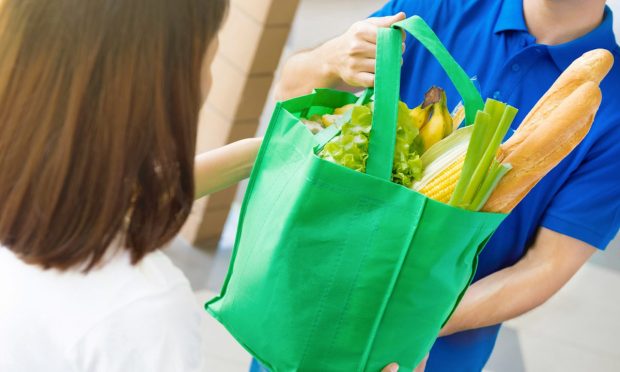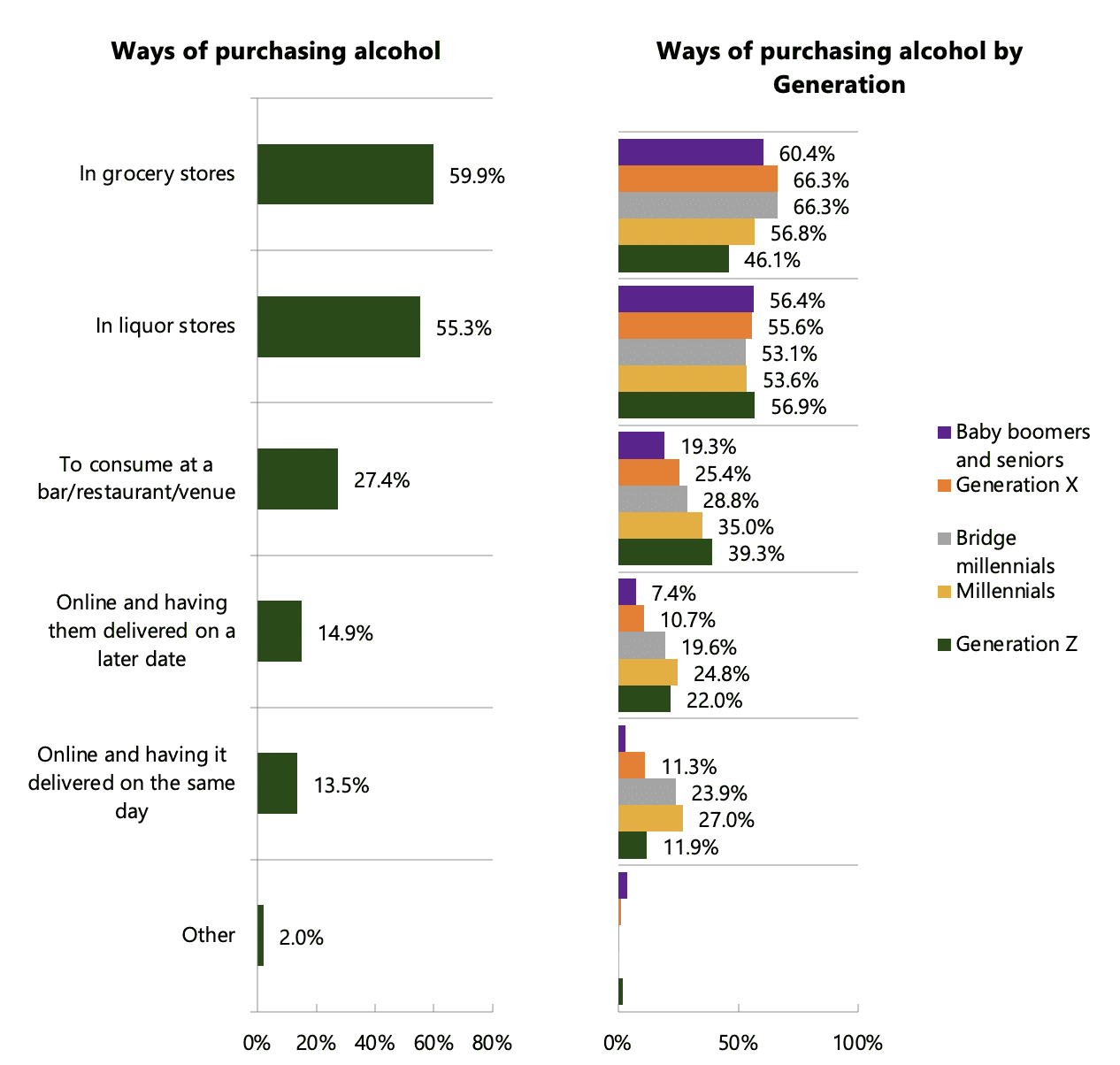Grocery Roundup: E-Grocery Innovations Meet Demand for Frictionless Convenience

New York is getting spoiled for ultra-fast grocery delivery options. A new 15-minute delivery service arrived in Manhattan last week, following the New York launches earlier this year of another 15-minute delivery option, Fridge No More, and of the 10-minute option Gorillas.
Read more: Gorillas Aims to Bring eGrocery Into the Future With Lightning-Fast Delivery
Buyk (pronounced bike), a grocery delivery service founded by those behind leading Russian grocery delivery service Samokat, went live in late August, operating throughout most of Manhattan, reported Winsight Grocery Business.
“Couriers on bicycles, we call them ‘buykers,’ deliver goods from a Store — a compact, efficient storeroom — located near you,” reads the delivery service’s website. “Orders are collected within two minutes and then delivered within another five to 10 minutes.”
Consumers are increasingly turning to online grocery for its ease and convenience. Data from PYMNTS’ recent study, What Consumers Expect From Their Grocery Shopping Experiences, created in collaboration with ACI Worldwide, finds that 76% of consumers who are shopping online more often are motivated by the channel’s convenience. There is plenty of room for growth, as the online grocery delivery space has been catching on slower than other delivery categories. Only 23% of consumers are ordering grocery delivery online, and only 34% are buying online at all.
See also: Digital Features Can Help Grocers Win Over 43% of Shoppers
New York has been a hotspot for digital grocery newcomers, with businesses eager to take advantage of New York customers’ tendency to spend more per purchase. As Buyk Co-founder Vyacheslav Bocharov told Bloomberg in June, “We understand that there are higher costs in New York. But there is also a higher check.”
Big Y Debuts Scan and Go
Scan-and-go self-checkout solutions have so far primarily been the purview of major retail chains. Walmart, for instance, offers Scan & Go checkout through its mobile app at its Walmart-branded locations and at its Sam’s Club warehouse locations. Now, smaller grocers are trying their hand at integrating scan-and-go checkout options.
Big Y, a Springfield, Massachusetts-based supermarket chain with almost 80 New England stores, announced on Wednesday (Sept. 1) that it is rolling out the myExpress Checkout Scan & Go option, created in partnership with FutureProof Retail, at 19 of its stores, with 10 more soon to be added.
You may also like: Sam’s Club’s Scan & Ship Tech Pairs In-Store Shopping Benefits With ‘Bring It to Me’ Ease
Grocery self-checkout is still in its early stages, but adoption is growing rapidly. PYMNTS data from last year’s How We Will Pay report, a collaboration with Visa, found that one in five consumers had used a self-service kiosk to make a purchase in 2020, up 25% from around 16% of consumers in 2019.
Related news: How We Will Pay 2020: With Connected Devices, at Home and During the Week
Toshiba Global Commerce Solutions Vice President of Business Strategy Kirk Goldman recently told PYMNTS that we are entering a new phase of self-checkout innovation, one in which businesses become more creative with their technology and consumers grow more comfortable utilizing the options available.
“We’re at kind of an inflection point right now,” Goldman said. “I think we’re at the start of this third wave where retailers have gotten a lot smarter about what they’re doing, and they’re starting to experiment a little bit more.”
Google Cloud and Innit Partner for Personalized Grocery Commerce
Grocery technology platform Innit announced on Wednesday (Sept. 1) that it has partnered with Google Cloud to offer grocers a range of personalized services across channels. The two companies’ join solution aims to “boos[t] retailer engagement, discoverability and conversion.”
The move to increase discoverability is key for grocers looking to shake their reliance on Instacart. After all, even when grocers can provide competitive, user-friendly digital ordering experiences in-house, aggregators such as Instacart can serve as a valuable discovery tool.
Findings from a PYMNTS survey of over 5,000 U.S. consumers revealed that 52 percent had ordered groceries via Instacart in the past year. With better search engine discovery capabilities, grocers can begin to reach some of these e-grocery shoppers without losing profits and customer data to the third-party platform.
“Grocery retailers are racing to upgrade their digital platforms, and personalization will be fundamental to this next generation of services for the modern store,” Paul Tepfenhart, director of global retail solutions for Google Cloud, commented. “The Google Cloud-Innit solution puts data at the center to remove friction from every stage of the shopping journey.”
Southeastern Grocers Opens Liquor Store Concept
Across industries, brands and retailers are seeking out ways to integrate their goods and services into more of consumers’ daily routines. Southeastern Grocers, a Jacksonville, Florida-based supermarket group that operates over 500 locations, is branching out beyond food to meet consumers’ alcohol needs with the Winn-Dixie chain’s new WDs Wine, Beer & Liquor concept, which opened its doors on Wednesday (Sept. 1).
“We were listening to the communities over the course of the pandemic telling us that more people are going to be entertaining at home and eating at home,” said Shawn Sloan, Southeastern Grocers’ region vice president, according to the Jacksonville Daily Record. “We felt, listening to their comments, it was the right time to do one of these standalone larger-sized stores.”
Notably, more consumers actually purchase alcohol from grocery stores than from liquor stores. PYMNTS data from a survey of 1,160 consumers who drink alcoholic beverages find that 60 percent of consumers purchase their beer, wine and spirits from grocery stores, compared to 55 percent purchasing from liquor stores. That said, younger consumers prefer to purchase their alcohol from liquor stores, with 57 percent of Gen Z-ers buying alcohol from liquor stores and only 46 percent from grocery stores.

